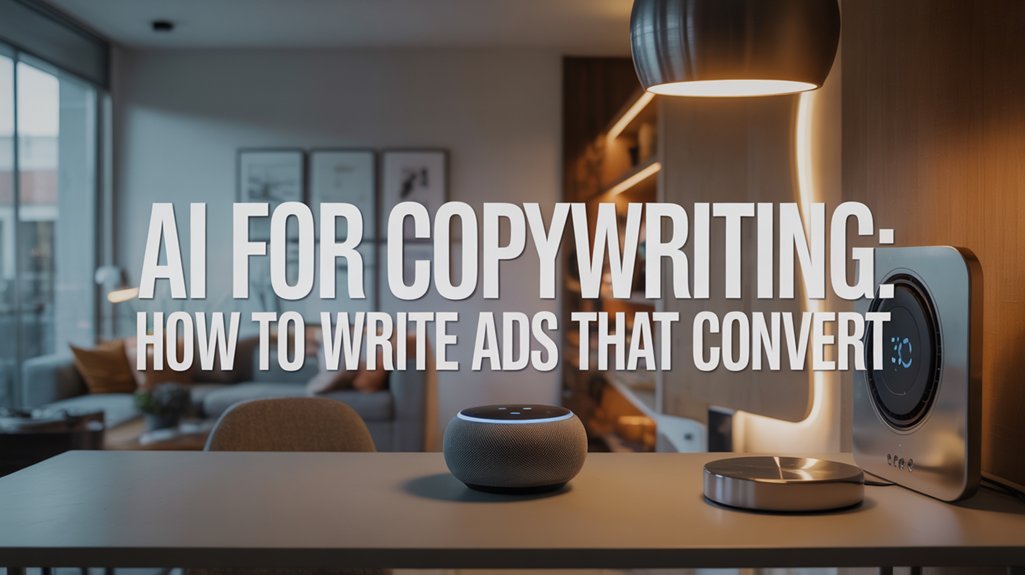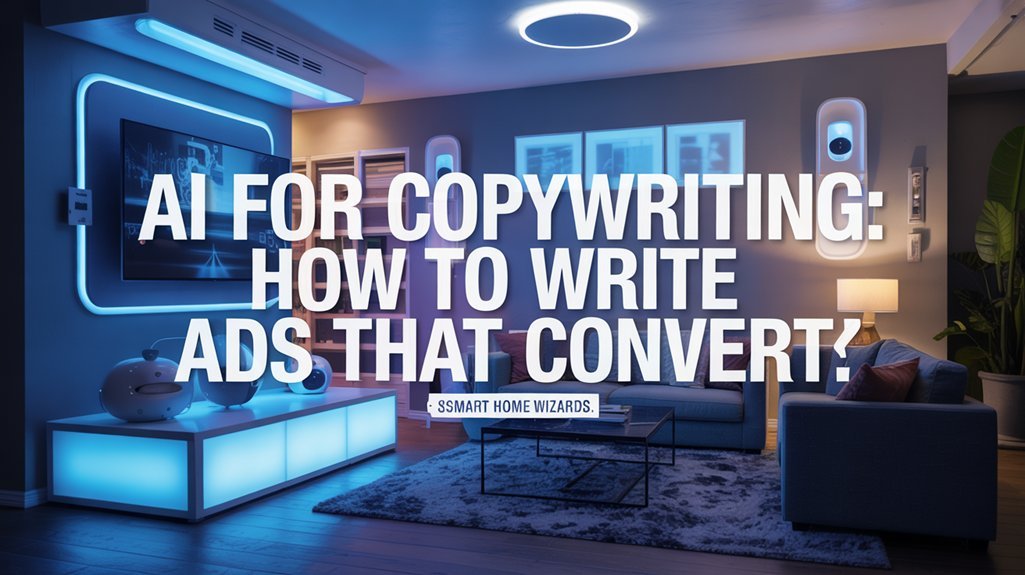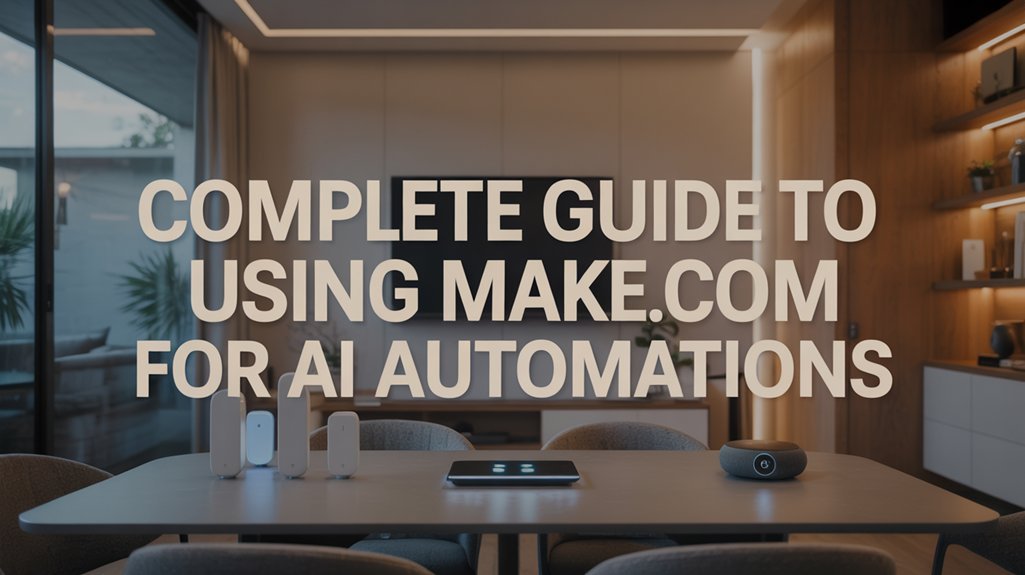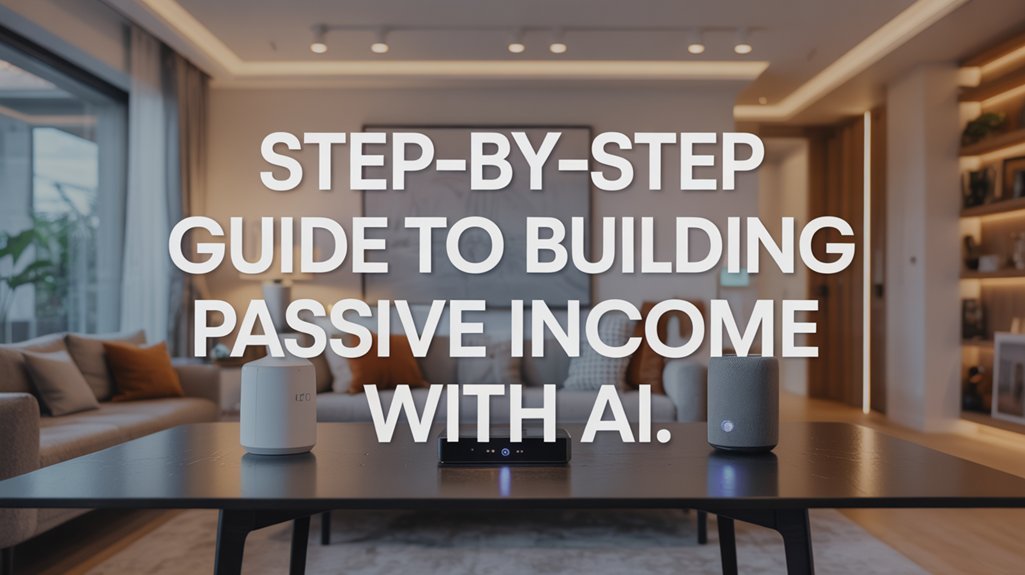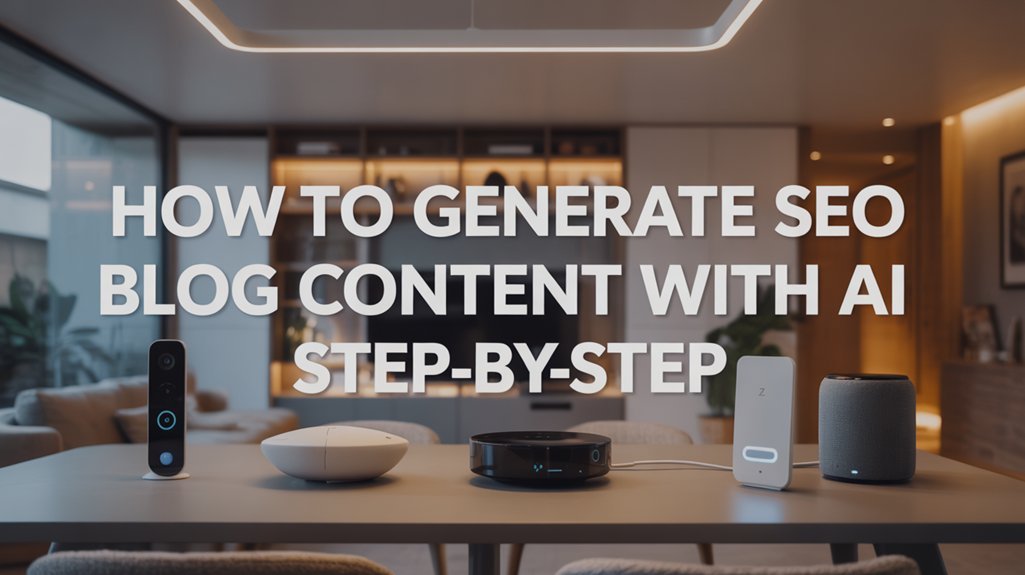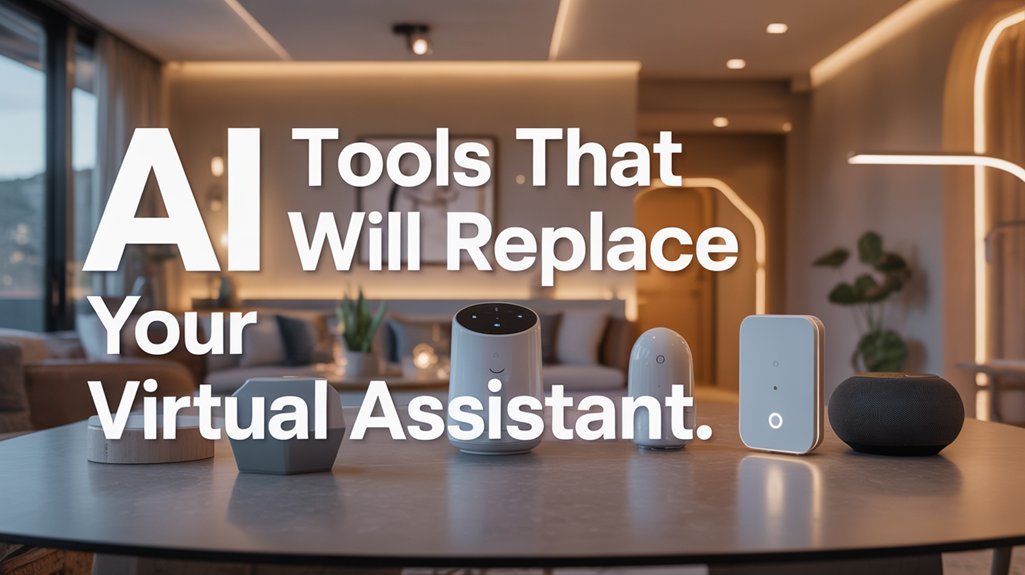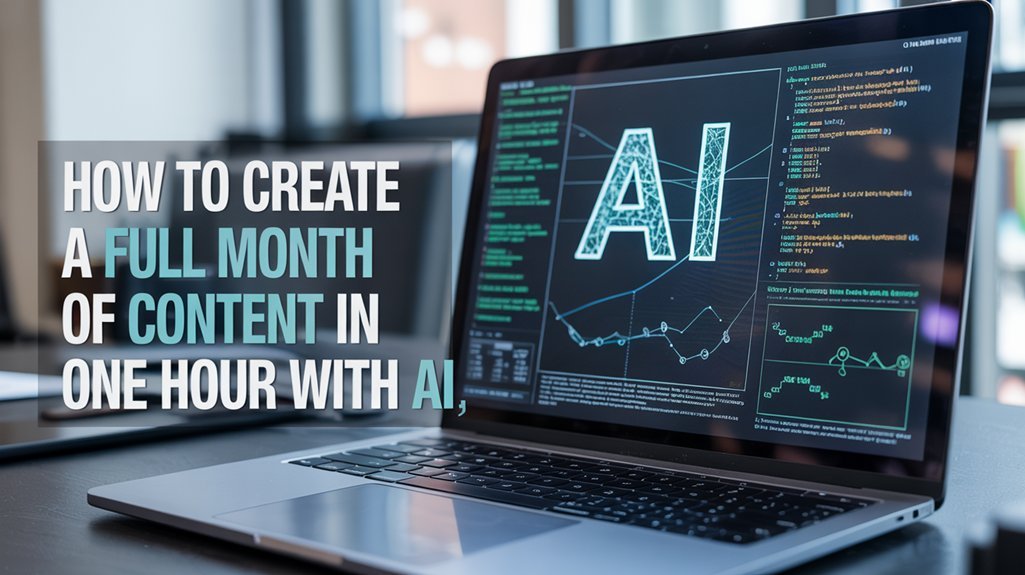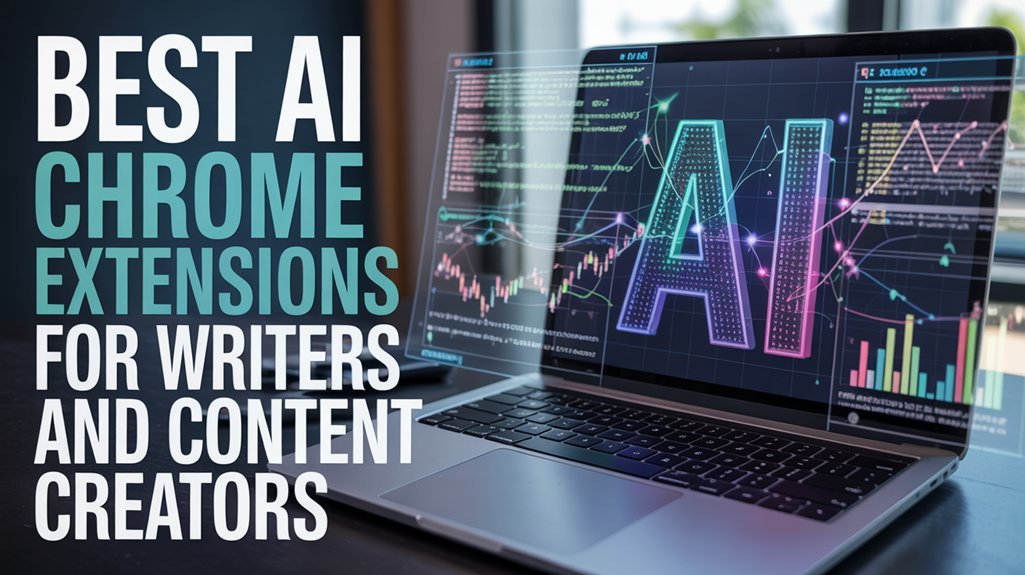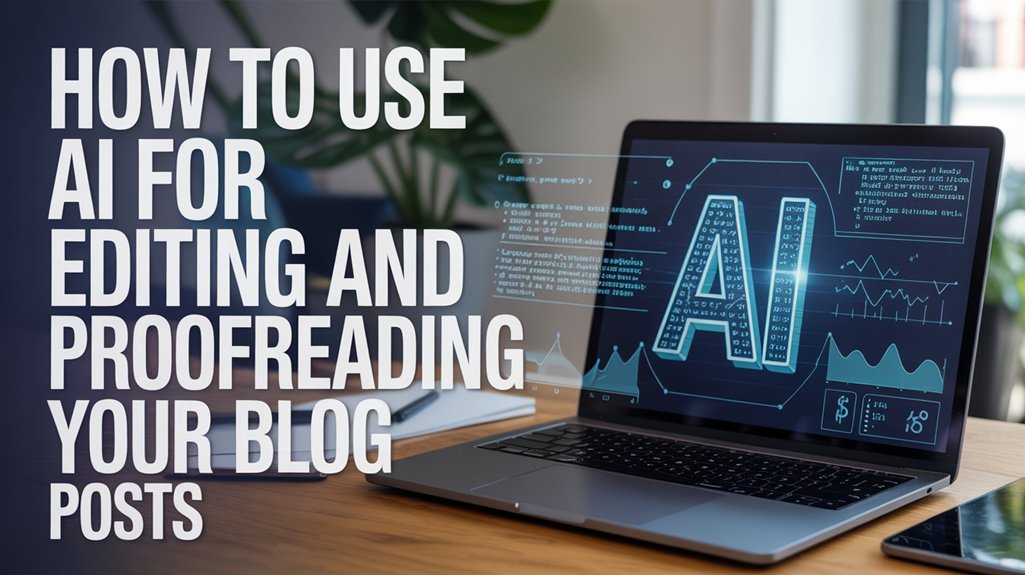You'll achieve up to 14x better performance with AI ad copywriting by feeding precise prompts that include customer testimonials, pain points, and brand voice guidelines. AI analyzes your historical campaign data and audience demographics to generate multiple ad variations instantly, converting weeks of manual research into practical insights. The key is systematically testing different hooks and CTAs while adapting your messaging for each platform's unique user behavior. Master these strategic refinements and data integration techniques to turn casual browsers into committed buyers.
Key Takeaways
- AI ad copy generators analyze brand voice, audience data, and performance metrics to create multiple high-converting variations simultaneously.
- Craft precise prompts with specific details like customer testimonials, pain points, and concrete selling points to maximize AI output quality.
- Adapt AI-generated copy to platform-specific requirements, matching tone and technical constraints for Google Ads, social media, and marketplaces.
- Integrate brand guidelines and performance data into AI tools to maintain consistent voice while creating credible, conversion-focused messaging.
- Test multiple AI-generated variations systematically using A/B testing frameworks to identify and optimize highest-performing ad elements.
Understanding AI Ad Copy Generators and How They Work
While traditional copywriting relies on human creativity and market intuition, AI ad copy generators utilize machine learning algorithms to analyze thousands of data points—from your brand voice and audience demographics to real-time market trends—and produce targeted ad content in seconds.
This copywriting tool alters your marketing efforts by generating multiple ad creative variations simultaneously, enabling you to test different approaches without draining resources.
The technology works by processing historical performance metrics and consumer behavior patterns to identify what resonates with your targeting specific audience.
You'll gain access to multimodal capabilities that produce text, images, and video content from a single prompt.
The system integrates A/B testing frameworks and real-time analytics, allowing you to identify high-converting ad variations quickly.
Data shows these tools achieve up to 14x better performance than conventional methods.
AI ad copy generators deliver up to 14x better performance than traditional copywriting methods, transforming marketing efficiency through data-driven content creation.
You're not replacing strategy—you're amplifying it with AI ad copy that's refined for conversion before launch.
By leveraging an AI SEO content optimizer, you can further enhance your ad copy's discoverability and ensure your campaigns reach the right audience through search engines.
Crafting Effective AI Prompts for Maximum Ad Performance
Your AI tool's output quality depends entirely on the precision of your input instructions. Effective copywriting prompts require strategic specificity: define your product, targeting specific audience segments, unique value propositions, and desired tone. This precision directly impacts ad performance.
Include concrete elements in your AI prompts: customer testimonials, conversion metrics, and pain points your solution addresses. These data points enable the AI to generate persuasive, credible ad copy that resonates with your market.
Test multiple prompt variations systematically. Analyze which elements drive superior ad performance, then refine your approach accordingly. This iterative process reveals what truly converts your audience.
Leverage insights from your highest-performing campaigns. Train your AI to replicate your brand's authoritative voice while maintaining consistency across all copywriting outputs.
Optimize and refine your GPT prompts continuously to extract maximum value from each interaction with your AI copywriting tool.
This strategic alignment guarantees your ad copy reinforces your market position and drives measurable results. Power lies in prompt precision—master it, and you'll dominate your advertising outcomes.
Platform-Specific Copywriting: Tailoring Ads for Different Channels

Your ad copy needs to adapt to each platform's unique environment—what converts on Facebook won't perform the same way on Google Search or marketplace listings.
You'll optimize ROI by matching your messaging structure, tone, and length to platform-specific user behaviors and technical constraints.
AI-driven funnels and emails can enhance your marketing by automatically adjusting messaging based on where users are in their customer journey across different platforms.
Let's break down the strategic differences between social media ads, Google Ads, and marketplace tactics to guarantee your AI-generated copy drives conversions across every channel.
Social Media Ad Strategies
Each social media platform demands a distinct copywriting approach because audiences interact with content differently across channels.
Mastering ad copywriting for social media requires targeting specific audience behaviors while using AI to generate enhanced variations quickly.
Platform-Specific Social Media Strategies:
- Facebook: Integrate customer testimonial elements and storytelling to build credibility and trust, driving conversions through emotional connection.
- Instagram: Prioritize visually-driven content that creates anticipation, letting compelling imagery lead your message.
- LinkedIn: Adopt authoritative, professional language emphasizing thought leadership and concrete business outcomes for B2B audiences.
- Google Ads: Focus on keyword-rich text within strict character constraints for maximum search visibility.
- Testing Protocol: Deploy multiple hooks and narratives simultaneously to identify highest-performing variations.
AI accelerates this process, enabling you to dominate multiple channels with precision-crafted messaging that converts. Combining AI writing with SEO optimization ensures your ads not only resonate with platform-specific audiences but also maintain maximum discoverability across search engines.
Google Ads Best Practices
Because Google Ads operates within strict character limits while competing in high-stakes auctions, every word must justify its presence through strategic value.
Your copywriting prompts for Google must prioritize relevance through targeted keywords that trigger qualified searches. Emphasize unique selling points that separate you from competitors—specificity converts better than generic claims.
Structure your ads around compelling calls-to-action that create urgency: “Claim 30% Off—Ends Tonight” outperforms passive language. Deploy A/B testing systematically across headlines and descriptions to identify winning combinations based on conversion data, not assumptions.
For location-based businesses, integrate local keywords strategically. “Seattle Emergency Plumber” captures higher-intent searches than generic terms.
Each element—from keyword placement to CTA positioning—should drive measurable performance improvements. Enhance relentlessly based on ROI metrics.
Marketplace and Classified Tactics
While Google Ads demands precision within character constraints, marketplace platforms like Facebook Marketplace, Craigslist, and OfferUp require an entirely different strategic approach centered on visual storytelling and trust-building.
Your ad campaigns must utilize these conversion-focused tactics:
- Spotlight unique features and benefits that separate your offering from competitors flooding these platforms.
- Deploy urgency-driven language like “limited availability” or “today only” to accelerate buyer decisions.
- Integrate customer testimonial content to establish immediate credibility with skeptical marketplace browsers.
- Implement location-based keywords for targeting specific audience segments within your local business radius.
- Analyze buyer demographics to craft messaging that resonates with their documented interests and pain points.
This data-driven approach changes casual browsers into committed buyers through strategic psychological triggers.
Leveraging AI for Audience Targeting and Persona Development

Understanding your audience has never been more precise or accessible than it's with today's AI-powered targeting tools. These platforms analyze your website data to generate detailed buyer personas, revealing demographics, behaviors, and interests that drive purchasing decisions.
You'll uncover patterns that manual research would take weeks to identify. AI tools excel at audience targeting by automatically segmenting your market and identifying critical pain points. This intelligence enables you to craft hyper-targeted ads that speak directly to specific customer needs, dramatically improving engagement and ROI.
AI-powered targeting transforms weeks of manual research into instant insights, enabling hyper-targeted campaigns that dramatically boost engagement and ROI.
The technology predicts preferences and emerging trends, giving you the strategic advantage to adapt campaigns before competitors recognize shifts in consumer behavior. The efficiency gains are substantial.
Instead of spending countless hours on persona development and market research, you'll redirect that energy toward creating compelling ad copy that converts. AI enhances the foundation work, enabling you to focus on execution and results.
Testing and Optimizing Ad Variations at Scale
When you're running paid ad campaigns, testing single variations manually creates a bottleneck that limits your ability to take advantage of winning messages.
AI eliminates this constraint by generating and testing multiple ad copy variations simultaneously, letting you dominate your market faster.
Here's how you scale your A/B testing with AI:
- Generate dozens of variations instantly using AI to create diverse messaging angles without draining creative resources
- Monitor audience engagement metrics like click-through rates and time-on-ad to identify which messages resonate with your targeting parameters
- Analyze performance data to uncover patterns that reveal what drives conversions in your specific market
- Deploy machine learning algorithms that automatically scale winning variations while killing underperformers
- Continuously refine campaigns by feeding performance insights back into your AI system for perpetual improvement
This approach alters refining from guesswork into a precision weapon, maximizing ROI while your competitors waste budget on mediocre creative.
Integrating Data and Brand Voice Into AI-Generated Copy

You'll enhance AI's copywriting potential by feeding it your brand guidelines—past high-performing ads, tone documentation, and messaging frameworks—so it learns to mirror your distinct voice consistently.
Performance data alters generic output into conversion-focused copy; when you input metrics like “30% sales increase” or “4.8-star rating,” the AI generates specific, credible claims that resonate with your audience.
This data-driven approach lets you scale personalized ad variations while maintaining brand integrity across every touchpoint.
Training AI on Brand Guidelines
Because AI models generate copy based on patterns they've learned, your brand guidelines must be translated into concrete, actionable training data rather than abstract principles.
Training AI on brand guidelines requires strategic inputs that change vague directives into high-converting ads.
Your AI training framework should include:
- Complete brand briefs specifying tone, messaging architecture, and forbidden phrases for consistent brand voice
- Archives of your highest-performing ad copywriting with conversion metrics attached
- Customer testimonials and quantifiable results to ground AI-generated copy in proven social proof
- Regular dataset updates reflecting current campaigns and evolving market positioning
- A/B testing protocols comparing AI outputs against performance benchmarks to continuously refine accuracy
This disciplined approach guarantees your AI doesn't just mimic language—it replicates the strategic elements that drive conversions.
Leveraging Performance Data Insights
Performance data converts AI from a language processor into a conversion engine. You're not guessing—you're commanding AI with metrics that drive results. Feed your AI prompts with ROI statistics, customer ratings, and conversion benchmarks from past ad campaign winners. This alters generic copywriting into targeted narratives that dominate.
| Data Input | AI Output Improvement |
|---|---|
| Customer success stories | Credible, resonant narratives |
| High-converting ad structures | Replicable winning frameworks |
| Audience engagement metrics | Precise targeting refinement |
| ROI and conversion rates | Performance-aligned messaging |
| Customer ratings/testimonials | Trust-building specificity |
Analyze what converted before. Your performance data reveals the tone, structure, and messaging that moved buyers. Use these insights to refine AI prompts continuously. Each iteration becomes sharper, more persuasive, more profitable. Data-driven copywriting isn't experimental—it's strategic execution.
Best Practices for Refining AI Output Into Conversion-Focused Ads
While AI can generate ad copy in seconds, raw output rarely converts without strategic refinement. Your targeting strategy demands more than automated text—it requires conversion-focused optimization that changes generic copy into revenue-driving assets.
AI-generated ad copy needs strategic refinement to transform from automated text into conversion-focused assets that actually drive revenue.
Change AI-generated drafts into high-performing ads through these proven techniques:
- Inject real data immediately: Layer customer testimonials, star ratings, and quantifiable results into your copy to build instant credibility and override buyer hesitation.
- Test hooks relentlessly: Deploy multiple variations of opening lines and calls-to-action, then let conversion rates dictate your creative direction.
- Platform-match your tone: Adapt AI output to match each channel's expectations—LinkedIn demands professional authority while Facebook rewards conversational immediacy.
- Edit for human connection: Strip awkward phrasing that signals automation; your audience craves authenticity.
- Use Creative Insights data: Let performance metrics guide your refining AI output process, doubling down on what converts.
Strategic refinement separates campaigns that burn budget from those that dominate markets.
Frequently Asked Questions
How to Write an Ad Copy That Converts?
Start by defining your target audience's core pain points, then craft strong headlines that command attention.
Use persuasive language with emotional appeal to trigger immediate response.
Your clear call to action must be specific and urgent—tell prospects exactly what they'll gain.
Deploy A/B testing systematically to identify winning variations.
Data shows personalized copy increases conversions by 202%.
Don't write—engineer persuasion.
Test ruthlessly, enhance constantly, and dominate your market with copy that converts browsers into buyers.
Is There an AI That Can Create Ads?
You'll find powerful platforms with phenomenal precision for ad generation today.
These AI capabilities automatically craft compelling creative writing—copy, images, and videos—while predicting performance metrics with 90%+ accuracy before launch.
You'll utilize advanced marketing strategies through instant audience analysis and rapid A/B testing across multiple variations.
The technology scans your content, alters it into high-conversion ads, and enhances user engagement automatically.
You're fundamentally wielding data-driven intelligence that amplifies ROI while minimizing guesswork in your campaigns.
How to Prompt AI for Copywriting?
To prompt AI tools effectively, you'll define your product, target audience, and conversion goal upfront.
Structure your requests with specific copywriting techniques, brand tone, and platform requirements. Include high-performing examples to guide the AI's creative brainstorming.
Specify audience targeting parameters and desired emotional triggers. Request multiple variations for strong ad testing.
The more strategic data you provide—demographics, pain points, competitor angles—the sharper your output.
Precision in prompting equals dominance in results. Control the input, control the conversion.
Is It Okay to Use AI for Copywriting?
Yes, you can ethically use AI for copywriting when you maintain creative authenticity and preserve your brand voice.
You'll need to address legal implications around disclosure and copyright while understanding AI limitations in nuanced messaging.
The human touch remains essential—you should review and refine AI output to guarantee it converts.
Smart marketers utilize AI's data-driven efficiency while maintaining ethical considerations and strategic oversight.
You're not replacing creativity; you're amplifying your competitive advantage.
Conclusion
You've got the blueprint—now don't let analysis paralysis turn you into a digital town crier shouting into the void. Deploy AI strategically: test 10+ ad variations weekly, feed it your conversion data, and refine ruthlessly. The brands winning right now aren't using AI to replace strategy—they're using it to execute faster. Start with one campaign, measure CTR and CPA obsessively, and scale what converts. Your competitors already are.

